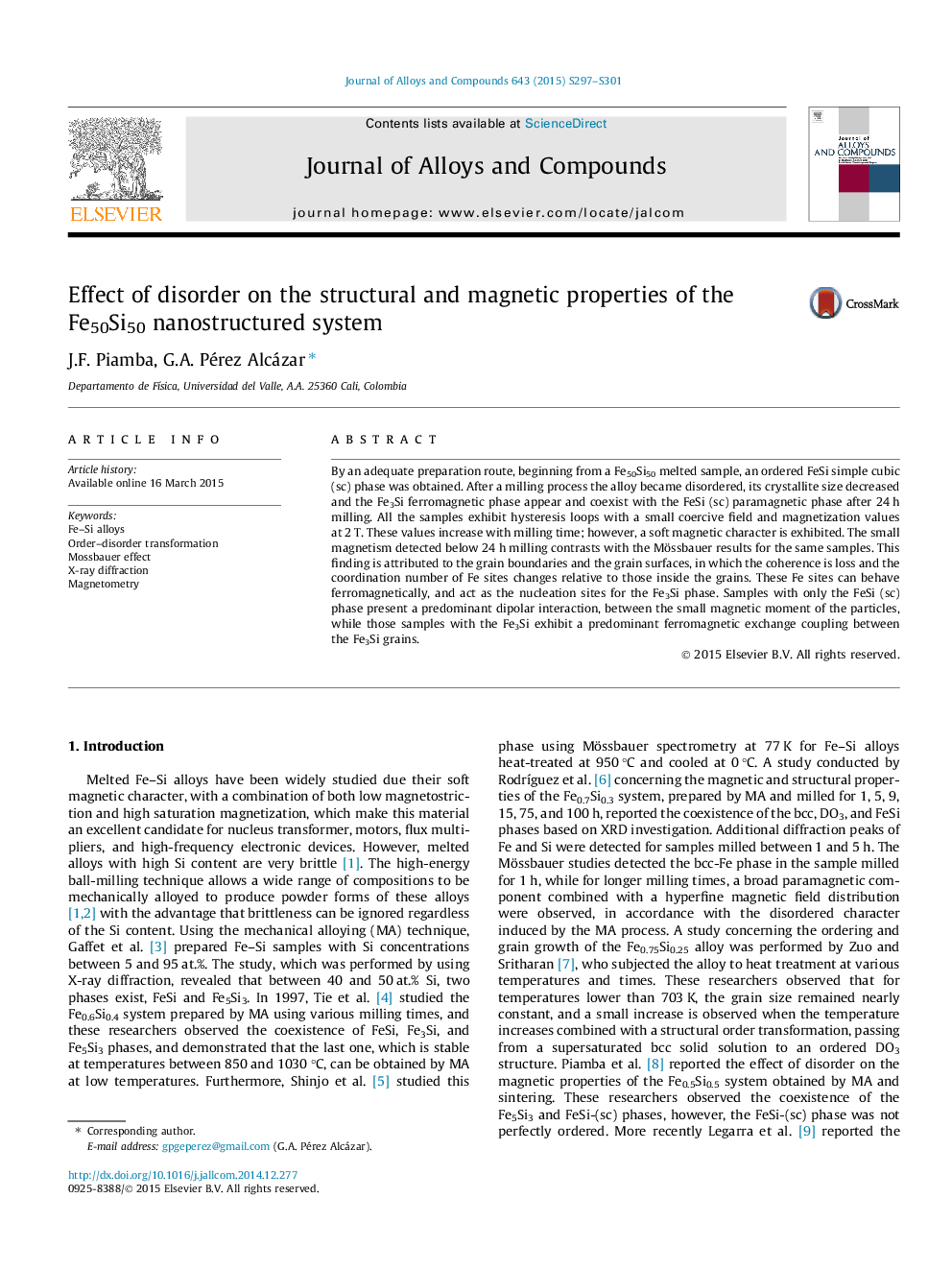| Article ID | Journal | Published Year | Pages | File Type |
|---|---|---|---|---|
| 1608312 | Journal of Alloys and Compounds | 2015 | 5 Pages |
By an adequate preparation route, beginning from a Fe50Si50 melted sample, an ordered FeSi simple cubic (sc) phase was obtained. After a milling process the alloy became disordered, its crystallite size decreased and the Fe3Si ferromagnetic phase appear and coexist with the FeSi (sc) paramagnetic phase after 24 h milling. All the samples exhibit hysteresis loops with a small coercive field and magnetization values at 2 T. These values increase with milling time; however, a soft magnetic character is exhibited. The small magnetism detected below 24 h milling contrasts with the Mössbauer results for the same samples. This finding is attributed to the grain boundaries and the grain surfaces, in which the coherence is loss and the coordination number of Fe sites changes relative to those inside the grains. These Fe sites can behave ferromagnetically, and act as the nucleation sites for the Fe3Si phase. Samples with only the FeSi (sc) phase present a predominant dipolar interaction, between the small magnetic moment of the particles, while those samples with the Fe3Si exhibit a predominant ferromagnetic exchange coupling between the Fe3Si grains.
